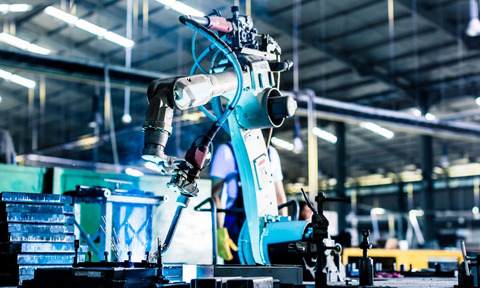Crystal, not balls: A grounded 4.0 guide hits the mark
29 May 2019

Proctor and Wilkins’ latest volume on the industrial present and future gains from its grounding in manufacturing’s realities, says Brian Attwood...
As publishing struggled in the mid-1990s to comprehend the effects of the nascent internet, a genus emerged: New Media Muse – mostly comprised of a single sex species of late middle-aged executives, capable of morphing themselves into seers for the benefit of the credulous and clueless.
In their chosen habitat of the ‘Big Ideas’ conference, they would ruminate to their audience from an achingly familiar script; one based on a formula of observation (reciting the unsettling changes we all knew), comparison (offering vague analogies about modern consumers being grazers, not feeders) and generalisation (everybody knows nothing, so we need another conference).
To be fair, they demonstrated it was possible for some to make a tidy living from a revolution in working practices. Times, however, have moved on and this sort of thing is no longer the remit of the fifty-something print exec seeking a pension plan.
Why? Perhaps because of the proliferation of manufacturers at the forefront of the next industrial revolution, whose acquaintance with the technology of change has been hands-on and has derived from constant, results-driven testing.
One shouldn’t underestimate the benefit to the IIoT-phobic whose compulsion to change competes with an aversion to downtime
EU Automation’s Mark Proctor and Jonathan Wilkins’ punningly-titled 4.0 sight: digital industry around the world harks back to the manner of their previous volume on obsolescence, BoOM; interviews and articles by the people who make stuff, a shopping list of key trends and concepts, a guide to the action elsewhere.
It’s also succinct in its ability to articulate what’s happening. One shouldn’t underestimate the benefit to the IIoT-phobic otherwise confronted with a wall of phrases (Big Data, Edge computing, deep learning), whose paranoid compulsion to change competes with an aversion to waste and downtime.
This is, as the authors say, “an environment where processes use sensors to manage the best way to turn …materials into products”, leading to a situation where said product takes on an active role for the first time.
The advantages to a country where overall productivity often lags embarrassingly seem obvious and the authors accentuate the positive, noting the UK can once again be the cradle of industrial revolution by “simply being less reluctant to adopt new technologies”. But that’s one rather big 'If'.
The Germans, of course, do things rather better when it comes to integrating new processes and tech, note the writers, providing the example of Siemens’ harnessing of predictive maintenance to reduce power consumption. They and their contributors also draw out the key areas to focus on – digital twins, VR/AR, AM, machine learning, blockchain.
As Neil Mead of Datateam Business Media stresses, UK firms’ conservatism when it comes to capital expenditure needs overhauling (once again, the lifecycle vs purchase price conundrum). Yet, for many firms with small budgets and large knowledge gaps, plus legacy assets, that’s easier said than fixed. So, with the rate of obsolescence increasing, expect greater emphasis on design for retrofits.
Among the countries provided for comparison, two to cite: Japan’s extension of robotics into the healthcare arena is a reminder that machines may not only make good the labour shortfall but perhaps may prove more benevolent guardians of the elderly and disabled than fallible and poorly trained people.
Secondly, the Chinese behemoth still has to address the contradictions of a system that struggles with unfettered innovation. Worth noting though that UK National Cyber Security Centre chief Ciaran Martin recently implied the biggest worry about the likes of Huawei is not they could function as Beijing’s Trojan Horse but that their cyber security needs bettering.
4.0 sight: digital industry around the world by Mark Proctor & Jonathan Wilkins is published by EU Automation

